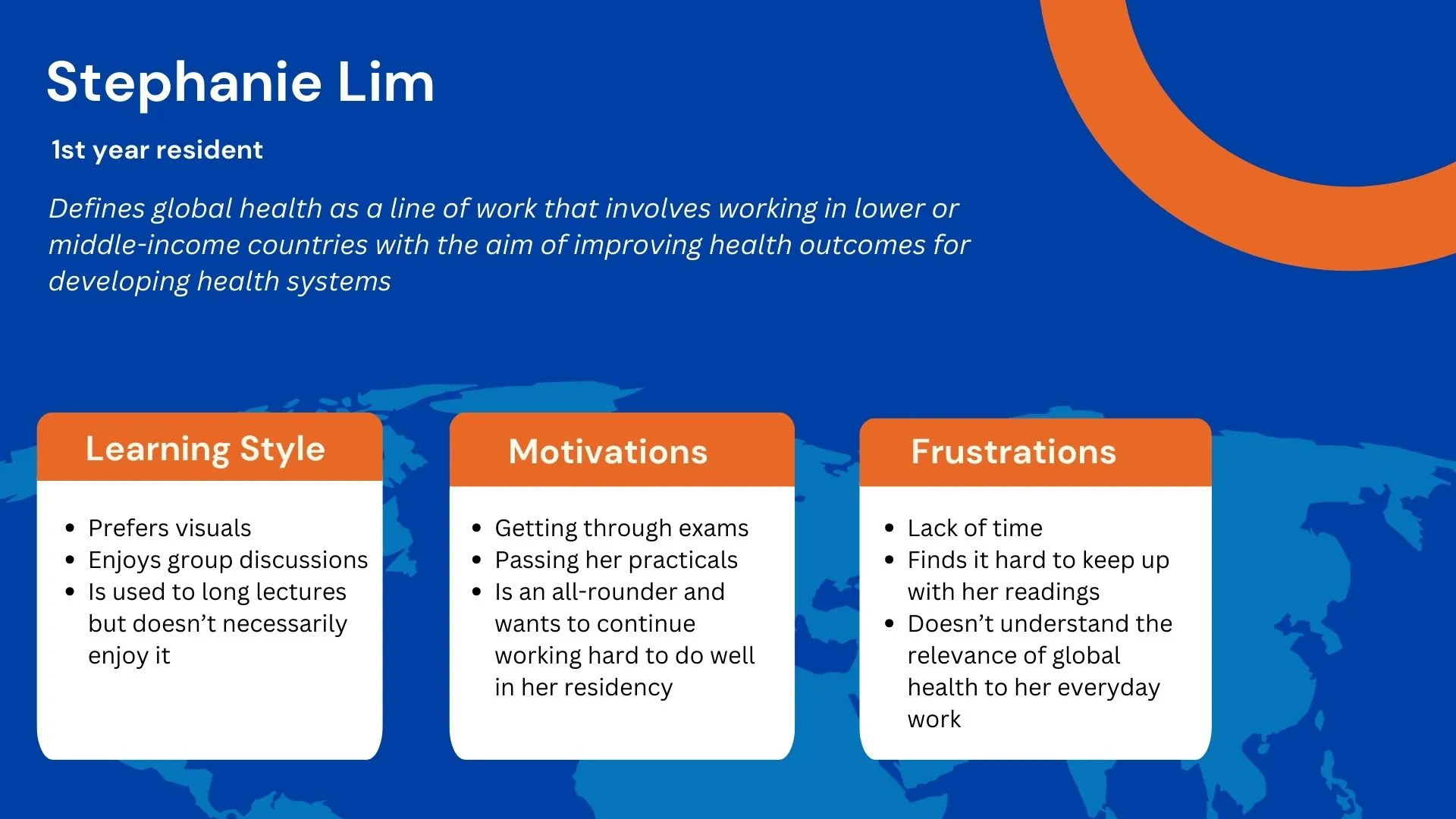Establishing Global Health Education in Singapore
The inaugural global health education curriculum aimed to make global health education available in Singapore and in Southeast Asia. Global health education opportunities are prevalent in the Global North but are far and few in the global south. The long-term goal of the programme is to develop a master’s programme in Global Health that is accesible to learners in the region.
Stakeholder Engagement: Building a Strong Foundation
Introducing a new educational programme within a large institution required gaining the buy-in from various stakeholders. This involved showcasing the importance and relevance of global health education to students within the institution. It also involved engaging with key stakeholders throughout the development process to understand their perspectives and challenges and incorporting these insights into the content development.
Market Analysis: Crafting a Unique Proposition
A market analysis of existing global health programs in the region and on various short courses available in the country was conducted at the start of dveelopment. From the analysis, it was evident that a clear gap, in content that focused on health issues within Southeast Asia, was present.
This played to the advantage of the institution, as many of its lecturers and researchers focused their work in Singapore and the region. The goal was to leverage this and create a unique proposition for learners - a curriculum that was focused on global health concepts and how they applied to the Southeast Asian region.
Understanding Our Learners: A Dual Approach
The global health programme had two groups of learners:
-
Residents in the hospital
-
Health professionals from various backgrounds with an interest in global health
Understanding the job to be done with these two groups was crucial. Learner research through surveys and focus groups ensured that our content development was aligned with the specific needs and expectations of each learner group.
Learner personas
Residents


Residents were focused on acing their exams and practicals. With the vigorous residency programme, motivation to engage in content that was not relevant to their exams or work was low.
This highlighted the importance of showcasing the direct links of global health with their line of work and engaging in their learning style.
Graduates

Graduate students who were interested in global health were encouraged to take the global health course. With most of their PhD work, overlapping with global issues and topics, motivation was very high amongst this group of learners. Learners were also used to the academic setting and had lower barriers or frustrations when it came to learning.
Healthcare professionals

Most professionals worked full-time and did their learning in the evenings. There were varying levels of learning abilities and motivation among the professionals. This meant that the programme had to have different mediums of learning catering to their level.
Content Development: Designing for Impact
Our content development process was guided by backward design principles, identifying the desired outcomes of the program and the evidence needed to validate these outcomes.
Based on Bloom’s taxonomy, we aimed for the level of learning, focusing on understanding and application. The goal was for the residents to articulate global health concepts and explain their relevance to their work. For the PhD students and healthcare professionals, we aimed to achieve the level of application where they were able to apply the concepts and knowledge to their work.

Bloom’s taxonomy Source: (Bloom et al., 1956)
Embracing Agile Principles: Continuous Improvement
Although much of the project followed a waterfall approach, I emphasized the importance of continuous feedback from learners to improve the program. We collected learner feedback through surveys at the end of sessions and qualitative feedback from focus groups. This intentional initiative ensured that our program remained valuable to learners and allowed us to de-risk our development process by making iterative improvements based on the insights gained.
Conclusion
The introduction to the global health module has successfully run twice and is now an integral part of a graduate program. This achievement marks a significant milestone in advancing global health education in Singapore and highlights the potential for challenging what knowlegde is priortised and deemed valuable.